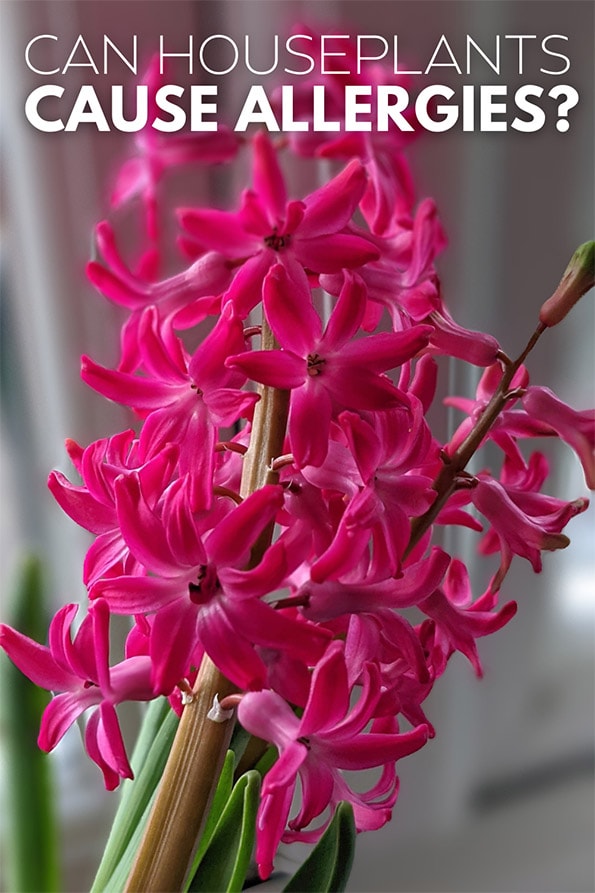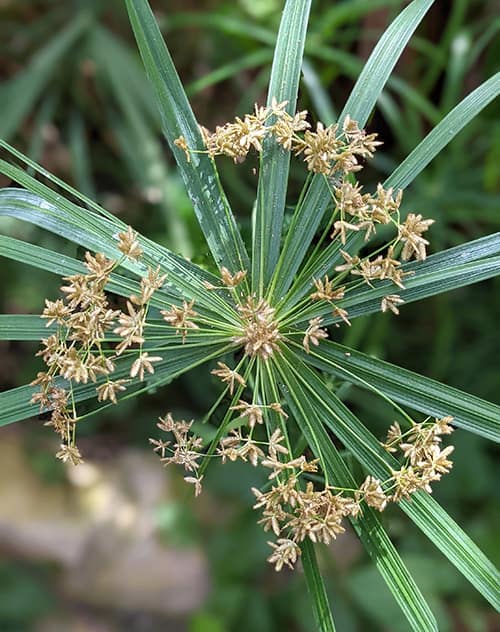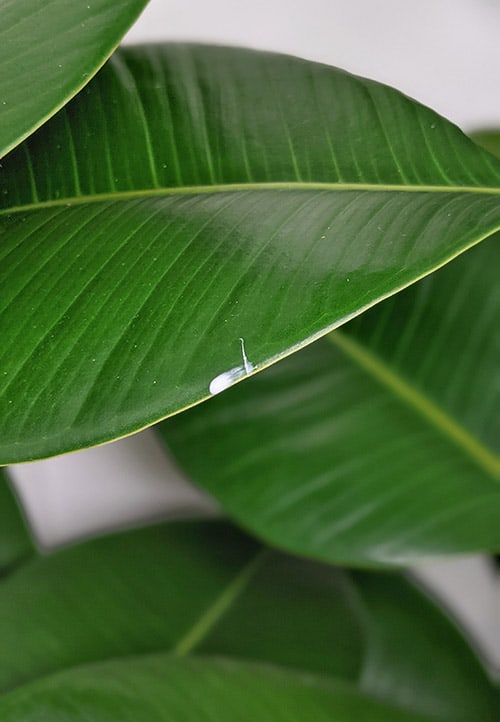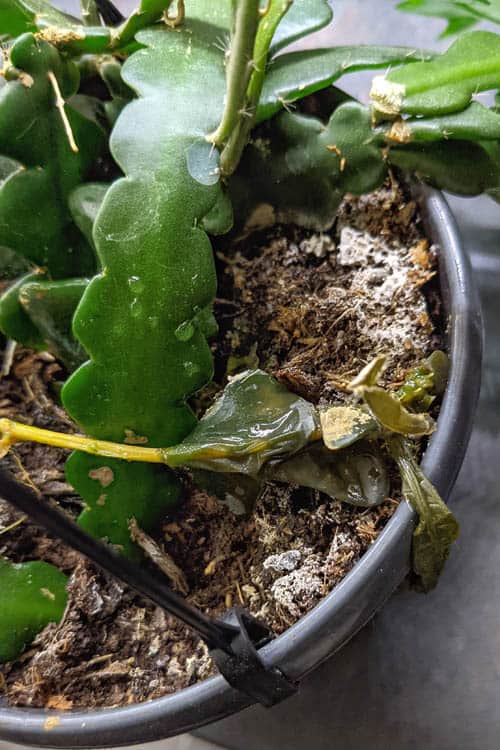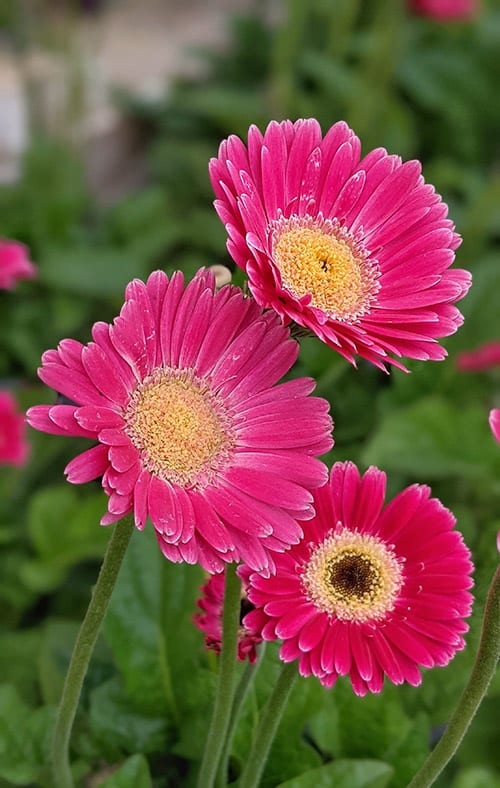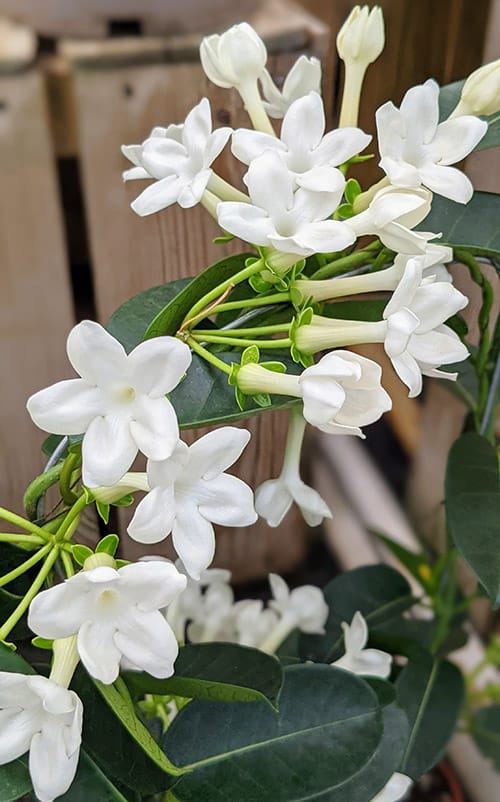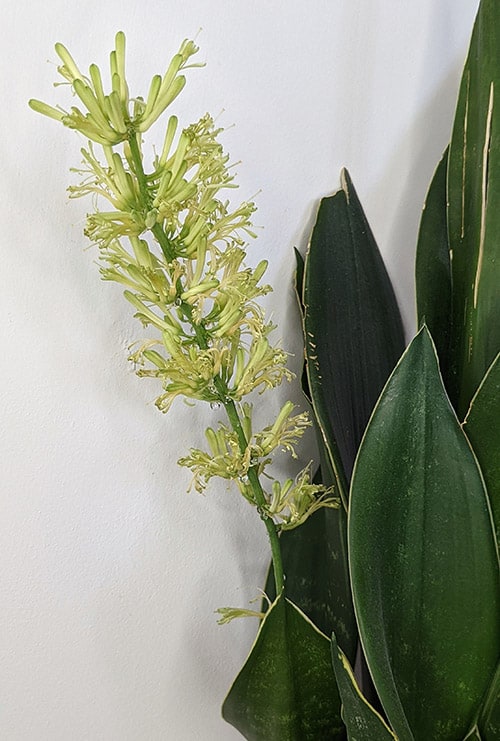Yes, some houseplants can cause allergic reactions for allergy sufferers or if people are sensitive to them.
Ever since a famous NASA study many decades ago, houseplants have long been thought to improve indoor air quality, not make it worse (which is partly true). However, certain plants can trigger symptoms like a runny nose, itchy eyes, or even skin irritation for some people.
A Hyacinth has one of the most beautiful flowers and scent of all flowering houseplants but can cause unpleasant allergy symptoms.
Generally speaking, these reactions are triggered by parts of the plant. For example, this could be the flower pollen or the sap within the stems. More rarely, the potting medium they're growing in can bring its own set of problems and let's not even get started on the dust issue (yet).
The rest of this article looks at these points in more detail. I'll highlight some indoor plants you might want to avoid, but if you can't resist them, or your partner won't let you get rid of them, I'll also suggest some ideas that could help.

Hi, I'm Tom!
If you're like me and enjoy the challenge of growing houseplants and getting them to thrive, then Ourhouseplants can help. This website shares my knowledge and years of growing plants and provides (hopefully) helpful advice on properly caring for your indoor plant friends.
It's important to understand the houseplant is not deliberately trying to give you a reaction. Many people don't have allergies or sensitivity to anything and can live happily with all indoor plants.
When we're talking about allergies it usually includes sensitivities too. There is however a difference that's worth quickly covering.
At its simplest, an allergy is just our immune system overreacting to a foreign body or substance. This can be long-lasting even when the cause of the allergy is removed.
Sensitivity is when something irritates our bodies and provokes a reaction, often without the immune system being involved. It tends to be milder, like causing a headache, and if you remove the offending irritant, the symptoms usually disappear quickly.
When it comes to houseplants, there are five main ways they can come into contact with our bodies and trigger a reaction.
The majority of houseplants do flower, some less frequently than others. But most of these flowers can produce and release pollen into the air creating an airborne foreign body. This can easily be breathed in or picked up by hands and transferred to our eyes or mouth through touch.
Umbrella Grass (Cyperus) makes a great houseplant, but it will produce small flowers that can cause allergic rhinitis, watery eyes or other hay fever related symptoms.
Some houseplants are flowering plants and produce a lot of pollen over their time in our homes. In the case of ferns, they don't flower and instead will produce microscopic spores from small discs on the undersides of their fronds.
Many perfumes contain natural ingredients that include parts of plants that have a scent. Around 30% of the population in the United States report sensitivity or allergic reactions to fragrances. Of course, some of that will be the added chemicals and not the plant parts, but reactions can occur from the plant ingredients too.
For example, I'm sensitive to several strongly scented houseplants like the Jasmine. The fragrance is powerful and can fill a living space with ease. Spending just a few minutes in this room can set my postnasal drip off.
Most plants will have fluids flowing through their stems and leaves. This will often contain various compounds such as sugars, amino acids, and latex in some plants. Few people have issues with the general fluids within plants, but those that contain latex can cause problems for allergy sufferers.
This white fluid is latex, which can aggravate sensitive skin or those with latex allergies. And yeah, I purposely scratched my Rubber Plant just to get this photo. I'm a terrible plant dad I know.
Although generally harmless, the latex is a much more complex compound and the human immune system can easily mistake it for something more sinister. You can often get latex on your skin, perhaps when you're pruning your plants, or accidentally cause damage when you move it.
This can cause irritated skin or redness. This is why people are generally advised to wear gloves when handling plants.
This time it's not the plant itself but what it's growing in. Good potting mediums are often organic in nature, meaning they're "alive." It's easy to upset the balance and for other organisms to flourish on the soil surface like bacteria or mold growth.
Mold spores can trigger indoor allergies in some people. This can happen when humidity levels are high or when plants are constantly overwatered creating soggy soil, which is happening here.
There are loads of different varieties of mold, most harmless, but some people are still allergic or sensitive to it.
Big Leaves + Indoor Environments = Dusty Plants.
If you have houseplants, trust me when I say dust happens. It's inevitable. In their native habit, the open air, rain and wind will keep the leaves free of dust and debris. Indoors there is no rain and ventilation is usually quite basic. This means considerable amounts of dust will gradually collect on the surface leaves.
You might try and clean them with a cloth, or someone could brush past them, and whoosh, the dust is in your face.
There are a lot of houseplants that could feature on this "avoid these plants" list, some have huge amounts of pollen or will ooze buckets of sap if damaged. But listing these plants for you is worthless. And here's why.
If you have allergies or a sensitivity, even a tiny amount of pollen from just one flower could set you off. So every houseplant has the potential to be "the worst". From African Violets and English Ivy to common Spider Plants can all irritate sensitive individuals.
Instead, here is a quick set of general houseplants that are commonly problematic for people and might be worth avoiding.
A handful of houseplants are wanted only for their blooms, which is why they're brought in the first place. Many of these plants will keep growing new flowers for months, which could mean months of itchy eyes and a long-term stuffy nose for you.
The Gerbera Daisy is a flowering plant that loves a semi sunny spot on a kitchen window ledge. But it can easily trigger seasonal allergies. Not a great way to feel when you're washing your dishes.
Some to think about avoiding are the Gerbera, Chrysanthemum (Pot Mum), the Christmas, Easter and Thanksgiving Cactus. Lilies are pretty bad and can also fall into the second category below. Unfortunately, I've found the popular Peace Lilies can be a problem too.
If you're very sensitive to pollen, try to avoid flowering Anthuriums, Kalanchoe and the Crown Of Thorns. These three can be in flower for much of the year and although they only produce tiny amounts of allergen, it could be enough to cause issues.
Peperomia plants are usually all about the foliage, but they regularly produce very subtle flowers that you might miss.
People with perfume sensitivity are particularly prone to fragrant flowering houseplants. These are plants brought primarily because they smell exquisite.
The fragrant flowers of this Stephanotis can brighten up and scent your indoor environment, as long as you don't have any issues with strong smells.
Fortunately, there are only a few fragrant flowering houseplants you have to avoid. I've already mentioned Lillies, but I'll add in Hyacinths, and most types of Jasmine, such as the Star Jasmine or Stephanotis. These all have potent scents that, while beautiful, can be problematic.
Plants that contain latex would include those from the Ficus family, like the famous Rubber Plant, Weeping Fig and Fiddle Leaf Fig. Most Euphorbia species like, the Crown of Thorns and African Milk Tree can produce a lot if damaged and this is also true for the Pachypodium.
The good news is that generally speaking, the plants that contain large volumes of latex, like Euphorbias, tend to naturally repel people with their thorns or spines.
Regardless you should always take care when handling these plants, or avoid them entirely if you have issues with the white sap.
Dust is a common allergen and can be highly irritating to some people. Certain houseplants will attract large volumes of it over time. The basic rule is that the larger the leaf surface area, the more dust particles you'll get. Palms, Ficus plants, and Monstera plants are all dust magnets.
Even if you or someone in your household has allergies and you know from experience you're susceptible to certain houseplants, you can still grow plants indoors.
You might not think the Snake Plant could cause hay fever; heck you might not even know it can flower! But it can, and this scent is potent stuff, especially in the evenings. If you suffer, you should snip off the flowering stem when it appears.
In summary, houseplants can cause allergies, but there is no reason you should avoid having an indoor garden, even if you're an allergy sufferer. There are practical and straightforward steps to eliminate coming into contact with allergens.
